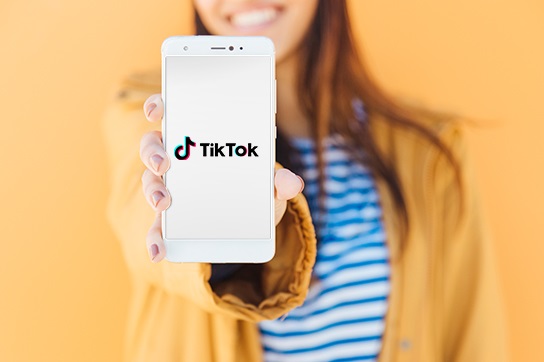Do you prefer a certain brand over others when you go out shopping?
You most certainly do, just like the rest of us but have you considered why it is so? It might be because the brand provides the best quality out there but there’s more.
A brand gets built with time. It takes consistent efforts by a business for a long period of time. During this time, the one company that manages to portray itself well and provide a memorable, lasting impression on the customer’s fares above the others.
Customers develop a personal connection to a brand due to the kind of messaging the brand publishes or their brand values and that helps in the perception building of the brand.
Moreover, in the digital age, experience touchpoints between a brand and its customers has increased manifolds leading to more opportunities for brands to satisfy customers by providing an enhanced experience.
When you’re building a brand, it’s crucial that you understand what branding is before developing your own successful branding strategy.
So, let’s dig into the basics of branding and find out what makes a killer brand identity.
What is Branding?
The word branding is derived from the ancient Norse language word Brandr – meaning to burn. In the olden days, marking your cattle with a burn mark to easily identify them in a herd was a common practice. Hence the word, branding.
In the modern world, it essentially means the same just not as grim. Today, branding is the creation of a distinct personality of a business through unique design or effective communication to help it stand out from the competition.

And it’s not just physical because effective branding not only makes your brand recognizable but also elicits an emotion in your customers – something that the biggest brands have been successfully doing for years.
Among other things, branding influences your brand’s perception among your buyers and it can help you turn your first-time customers into loyalists.
However, branding is not as easy as it sounds. Apart from everything that it needs to be, a brand should be consistent and that’s where brand identity comes into play.
What is Brand Persona and Brand Positioning?
Brand Persona is a collection of qualities and traits that you attribute to your brand. This of it as a person who would ideally represent your brand as a mascot or a brand ambassador. Remember the guy in the old spice commercials who would say, “I am the man your man can smell like”. That guy is the brand persona of Old Spice.
It could be anything – personality traits, values, or attitudes. However, they need to be traits that your most ideal customers would resonate with or relate to.
You can use a person or an idea to accentuate your brand persona but it should be in such detail that your customers can easily connect with, something or someone they would bet they know personally.
A well-thought, well-crafted brand persona builds a personal connection with your customers. To them, your brand becomes a lover of sorts. They are attracted to it, they adore and admire it, they hold it close and live by it.
That’s the power of a strong brand persona.

While Brand Persona is the idea that you want to portray your brand as Brand Positioning is how you present it to your customers. It involves positioning the brand in a way that’s so precise that there’s no two ways of seeing it. It should almost immediately stoke your customers’ imagination about your brand’s value.
Although creating a powerful brand positioning strategy is no easy task, nobody can deny that it’s all worth it. In the end, it pays off as you have never imagined.
What is Brand Identity?
A brand would instantly turn into a faux pas if it is inconsistent.
If your customer is unable to identify your brand through your marketing collateral, it serves no purpose and all that effort leads to nothing.
Creating a consistent brand requires creating a distinct brand identity.
Brand identity involves the visible elements of branding – the logo, the colors, design patterns, and the like. When a brand identity is distinguishing and consistent across all marketing material, your customers recognize your brand immediately which is profoundly impactful when it comes to marketing.

Brand identity also involves the communication patterns of your brand, whether it be written communication through campaigns and promotions or the language your employees use with your customers.
Now brand identity is mostly to, well, identify your brand but what happens after?
How do you keep your customers engaged with your brand? How will you retain them now that you’ve allured them into the tribe?
The best thing you can do is understand them and not just understanding what age groups and geographical regions they belong to but what they like, what they don’t, what inspires them, what makes them happy, and what despises them. Everything that you can lay your hands on.
Why is Branding important?
At the mention of the Old Spice commercial, the guy popped up in your mind, didn’t he?
That recall of a brand is the treasure that effective branding gives you. That’s the return on the investment that Old Spice put into those commercials. That recall is precious.
Let’s take another example.
It’s a hot Saturday afternoon and you are thirsty. You go to a shop and ask for a coke. The shopkeeper says he doesn’t have any. So, you take a Pepsi instead.
Does that mean that the millions that coke spent on their advertising went for a toss?
No, of course not.
The very fact that you asked for Coke proves that. You associate quenching thirst with Coke and that’s precisely what branding does and that’s why it’s important.
A question – When you cut your finger, do you ask for a bandage at a pharmacy or Band-Aid?
That’s some powerful branding, isn’t it?
At every stage of a buyer’s journey, branding helps you build a connection with your customers that will make them come back for more and that translates to more sales.
Whether it be a first-timer who’s curious about your products or services or someone who’s been your customer for decades, your brand keeps them feel that they belong to something bigger than themselves.
And that is a very special feeling. Belonging to a tribe, a community, or a group is very essential for human beings.
Branding allows you to present your customers as to why being a part of your tribe is worthwhile and how it’ll impact their lives in a positive way. It also helps your customers know what to expect from you.
Key Elements of Brand Identity Design
Positioning
Effective positioning of your brand tickles very specific parts of your customer’s brain and tells them what to think of when they think about your brand – what emotion you want to elicit, what questions you want them raised, or what action you want them to take.
To your most relevant audience, your brand positioning states your uniqueness to maximize the stress on the value that you provide. In a concise manner, it tells them how different you are from the competition and you’ve all the answers they need.
Voice
The voice of your brand is how you express your brand personality in words across multiple media of communication.

There are three important considerations when it comes to building your brand’s voice:
- Personality
- Rhythm or Pace
- Vocabulary
When you boil down to a specific voice for your brand and you’re sure that it’ll resonate well with your customers, you can employ multiple tones for various purposes while in communication but your voice will always remain the same.
Tone
The tone of your brand’s voice is similar to the tone of your voice.
Your voice never changes when you speak to different people, on different occasions, or among different groups but your tone does.
You optimize your tone as per the person you are speaking to or the place you are speaking at and that’s exactly what the tone of your brand is and what tone you decide on depends on the type of content you’re creating, the purpose of the content, and the timing.
You don’t want to sound serious when you’re creating a meme on a viral trend or the humor would be lost on your customers which will truly be a waste of your time and energy. Worse still, the joke could turn on you and you don’t want that.
Messaging
Messaging or values of your brand is one of the most important, if not THE important, pieces of content you’ll ever write about your brand. That’s because your brand’s messaging is not only an outward communication but internal communication as well.
As such it invites not only customers to buy from you but also the exceptional talent to work with you. It represents all that you stand for and how you are striving towards making an impact on the world around you and beyond

Your brand messaging should be clear and precise and not vague and generic. It will help you pitch perfectly in seconds and take your point across without much effort. As you attract great talent to your business, there’s an abundance of great ideas and great ideas lead to more business.
Visual Identity
Your brand’s visual identity comprises of all the things that make up the appearance of your brand, from your logo and color scheme to your fonts and typography. It’s very important that your brand’s visual identity remains consistent across all channels so that it’s easy for your customers to recognize your brand.
It should also rightly resonate with your values and give out a positive picture of your brand. Understanding the psychology behind the colors, the legibility of the fonts, and the relevancy of your logo in your industry helps you in creating a visual identity that’ll help you drive and retain more customers.
The Go-To Guy! is a full-service marketing and branding agency that helps you build your brand in a way that it speaks to your customers to build strong relationships and drive more business.





